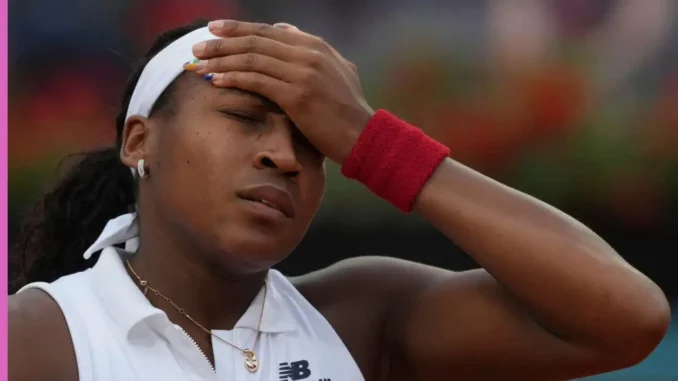
Coco Gauff’s recent performances have sparked discussions among tennis experts, particularly regarding her forehand. Former tennis stars Andy Roddick and Jim Courier have offered their perspectives on this aspect of her game, highlighting both the potential and the challenges it presents.
Gauff, a young player with immense talent and potential, has made significant strides in her career. However, her forehand has been a subject of scrutiny, with some observers noting inconsistencies and a tendency to break down under pressure. This was particularly evident in a recent match, where her struggles with the shot became a focal point of post-match analysis.
Jim Courier, a seasoned commentator and former Grand Slam champion, pointed out the high number of unforced errors Gauff committed on her forehand side. “She had a very high number of unforced errors on that shot,” Courier observed, emphasizing the need for Gauff to address this issue to elevate her game to the next level. He further elaborated on Gauff’s evident frustration during the match, noting her interaction with her team. “She was very frustrated with her team – they were trying to help her,” Courier stated, highlighting the challenges Gauff faced in maintaining composure and executing her forehand effectively under pressure. Courier acknowledged Gauff’s resilience throughout the tournament but stressed the concerning nature of the forehand errors, especially in crucial moments. “You don’t want that to happen at the biggest moment,” he remarked, underscoring the importance of a reliable forehand for consistent success in high-stakes matches.
Andy Roddick, another former US Open champion known for his powerful game, offered a slightly different perspective. He acknowledged the ongoing discussion surrounding Gauff’s forehand, stating, “The forehand, which we all talk about all the time, is always going to be in the back of her head until it’s not.” Roddick suggested that Gauff needs to adopt a more aggressive approach with her forehand, particularly early in matches. “All of us say she has to be aggressive on it, she has to go for it,” Roddick asserted. However, he also recognized the potential for this strategy to backfire if not executed effectively. “If she’s not finding it early, there’s just not a world where she can get to a high number of errors on that side in two sets,” Roddick noted, implying that an overly aggressive approach could lead to a cascade of errors.
Roddick proposed an alternative strategy: “I think she should be aggressive early, and then if it’s not there and the errors are mounting, I think she has to just use her motor, right, use her legs to try to find herself in the match.” This suggests a need for Gauff to adapt her tactics based on how her forehand is performing on any given day. If the aggressive approach is working, she should continue to press her advantage. However, if errors accumulate, she should rely on her athleticism and court coverage to stay competitive and work her way back into the match.
The insights from Roddick and Courier highlight the complexity of the situation. Gauff’s forehand is a shot with immense potential, but it also presents a significant challenge. To unlock its full potential, Gauff may need to strike a balance between aggression and consistency, while also developing the ability to adapt her strategy mid-match based on her performance.
The analysis of Gauff’s forehand also underscores the intense scrutiny that young stars face in the world of professional tennis. Every aspect of their game is dissected and debated by experts and fans alike. While this scrutiny can be challenging, it also provides valuable feedback and can serve as a catalyst for improvement.
Ultimately, how Coco Gauff addresses her forehand will play a significant role in shaping her future success. With the guidance of her coaching team and the insights of experienced observers like Roddick and Courier, Gauff has the opportunity to refine her technique, develop a more consistent approach, and solidify her position among the game’s elite.
Leave a Reply